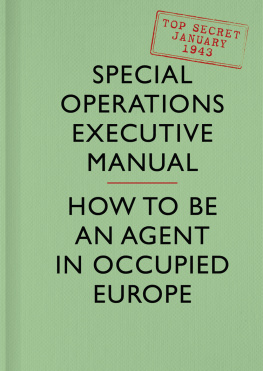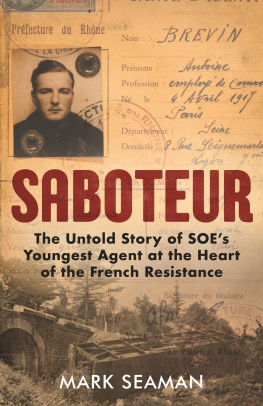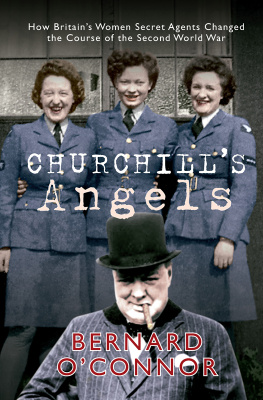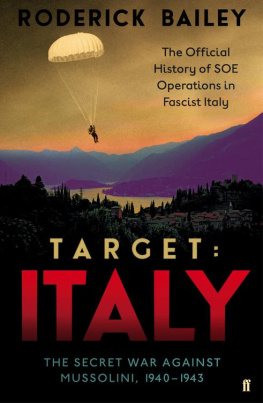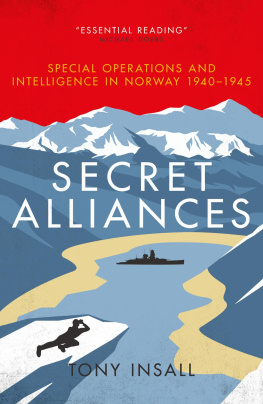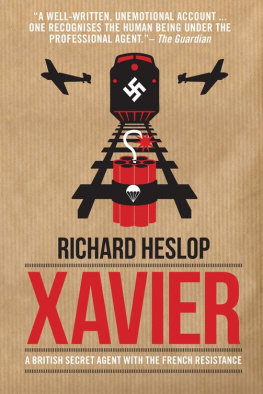Contents
About the Book
SOE, the Special Operations Executive, was a small, tough British secret service, a dirty tricks department, set up in July 1940. Recruited from remarkably diverse callings, the men and women who were members of this most secret agency in the Second World War lived in great and constant danger. Their job was to support and stimulate resistance behind enemy lines; their credentials fortitude, courage, immense patience and a devotion to freedom.
The activity of the SOE was world-wide. Abyssinian tribesmen, French farmers, exiled Russian grandees, coolies, smugglers, printers, policemen, telephonists, tycoons, prostitutes, rubber workers, railwaymen, peasants from the Pyrenes to the Balkans, even the regent of Siam all had a part to play as saboteurs, informers, partisans or secret agents.
In this engrossing and illuminating study, the eminent Second World War historian, M.R.D. Foot, sheds fresh light on the heroism of individual SOE agents across the world and provides us with the definitive account of the Executives crucial wartime work.
About the Author
M.R.D. Foot was an army officer throughout the 193945 war, and was awarded the French Croix de Guerre for work with the SAS in Britanny. He taught politics and history at Oxford, was for six years Professor of Modern History at Manchester, was the first editor of Gladstones diaries, and has written among other books SOE in France (the official history), Resistance, MI9 (with J.M. Langley) and Six faces of Courage. He helped Ian Dear edit The Oxford Companion to the Second World War. He is married, with two children, and lives near Cambridge.
Professor David Stafford is the author of several books on intelligence and secret war, including Britain and European Resistance 19401945; Camp X: SOE and the American Connection; and Churchill and Secret Service. A former member of HM Diplomatic Service, he is at present an Honorary Fellow at the Institute for Advanced Studies in the Humanities at the University of Edinburgh.
List of Illustrations
. Caxton Street. Where it all began
. 64 Baker Street today
. 1 Dorset Square
. Cartoon from the Evening Standard, 2 August 1939
. Winston Churchill with tommy-gun, August 1940
. Millis Jefferis
. Lawrence Grand
. Jo Holland
. Dalton, Ingr(?), Gubbins and Jebb
. Duff Cooper, July 1941
. Eden and de Gaulle, November 1941
. Lord Selborne as MEW
. Sir Charles Hambro
. C
. Churchill and Macmillan, 1943
. CD
. De Gaulle talks to his men
. Wilhemina talks to her people
. Passy just after the war
. Jean Moulin
. Links: packing C-type containers, Italy, 1945
. Links: a Halifax bomber
. Links: a daylight Lysander pick-up south of Turin, April 1945
. Links: removing stores from a French reception
. Bren light machine-gun
. Links: an A Mark III transceiver
. Encipherment in the Double Transposition Code
. A free French wireless operator contacts London
. An SOE One-Time Pad code (on silk)
. A Belgrade newspaper offers reward for Tito or Mihailovi
. Tito in the mountains
. Mihailovi
. Marko Hudson
. Mihailovi, Bill Bailey and a etnik group
. A late rail cut, south of Mcon, France, 30 August 1944
. A maquis instructor holding a Mark II Sten
. Rail bridge at Viegrad demolished 6 October 1943
. Gorgopotamos viaduct before 25 November 1942
. Armada sabotage chief Raymond Bassett
. Andr Jarrot
. Colonel Chris. C. M. Woodhouse in 1944
. Pearl Withington
. Noor Inayat Khan, Madeleine
. Violette Szabo
. Arthur Nicholls
. Maurice Buckmaster
. Francis Cammaerts
. Richard Heslop
. Gerry Holdsworth
. Charles Macintosh
. Contact: two resisters with an American officer in the Cotentin
. Norsk Hydro Plant, Vermork
. View of the Norsk Hydro plant showing the pipes and the ravine
. USAAF B-17 bombers make a daylight drop into the Vercors, 14 July 1944
. Reception of a daylight drop in the Corrze, 14 July 1944
. F. Spencer Chapman
. Peter Kemp
. A clam, an adhesive mine
. Plaque in Beaulieu Abbey cloisters unveiled in 1969
Introduction by David Stafford
For the reader keen to understand the origins, structure, staffing, and methods of operation of Britains Special Operations Executive, this book remains as indispensable as when it first appeared in 1984. Its authors knowledge of the subject is unique. His own career lay outside SOE, but as a young wartime officer with the SAS in Brittany he knew many of the basic skills and techniques of secret war.
More important, perhaps, was that after the war he was appointed the official historian of SOE in France and enjoyed privileged access to its voluminous and then still secret papers. He also talked with former senior officials in Baker Street, its London headquarters, and agents, men and women, who had run dangerous missions behind enemy lines. SOE in France, his groundbreaking history, was published in 1966. A number of popular and sensational accounts of SOE had appeared since the war, of course, including personal and often highly embroidered memoirs by agents of their exploits. There were also two well-informed and enlightening accounts of its story by senior officers, Bickham Sweet-Escott and J.G. Beevor, who had served in Baker Street and elsewhere, and a detailed monograph on Poland based largely on records of the Polish Government-in-exile. But, with the SOE archives firmly under lock and key, few but Michael Foot could write with documentary authority. It was inevitable, therefore, that he should write this background volume to accompany the highly successful BBC television series broadcast that same year.
SOE was hastily improvised in 1940 to wage subversive war behind enemy lines to set Europe ablaze in the words of the Prime Minister, Winston Churchill. Roughly cobbled together from a few small existing outfits, it recruited where it could and made up the rules as it went along. It fought bureaucratic wars, made mistakes, and learned by trial and error. Its central brain Baker Street was run by a relatively small group of people, and personalities counted for a lot, as they did, too, in its regional headquarters in Cairo and New Delhi.
Unconventional in many respects Dr Hugh Dalton, its first political master, prided himself on waging ungentlemanly war it was highly conventional in others. While many of its agents were eccentrics, misfits, and black sheep, its senior ranks came mostly from the familiar networks of the public schools, the City of London, the business world, the armed forces, and the Secret Intelligence Service. While many of its most distinguished figures had a military background Major-General Sir Colin Gubbins being the outstanding example the kernel of SOE came from the old Section D of SIS, and it remained dependant on Broadway (SIS HQ) for a long time after gaining nominal independence. It did not, for example, acquire its own communications and ciphers until early 1942. The result was a jealous rivalry that in Whitehall infected relations for the rest of the war, at one point reducing even Churchill to an outburst of resigned frustration. Subversive and guerrilla war at home was thus a constant accompaniment of SOEs struggles against the enemy abroad.
Next page


